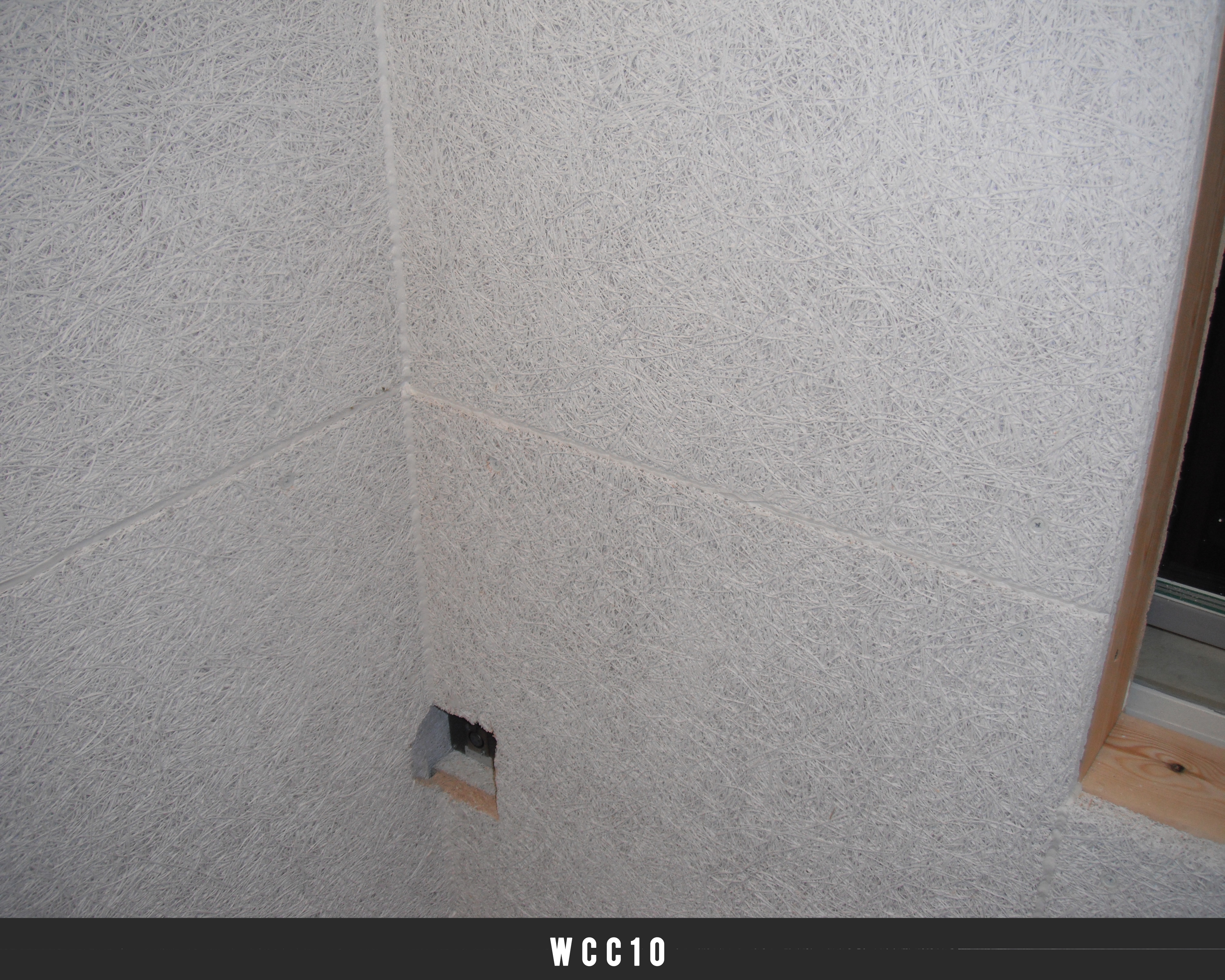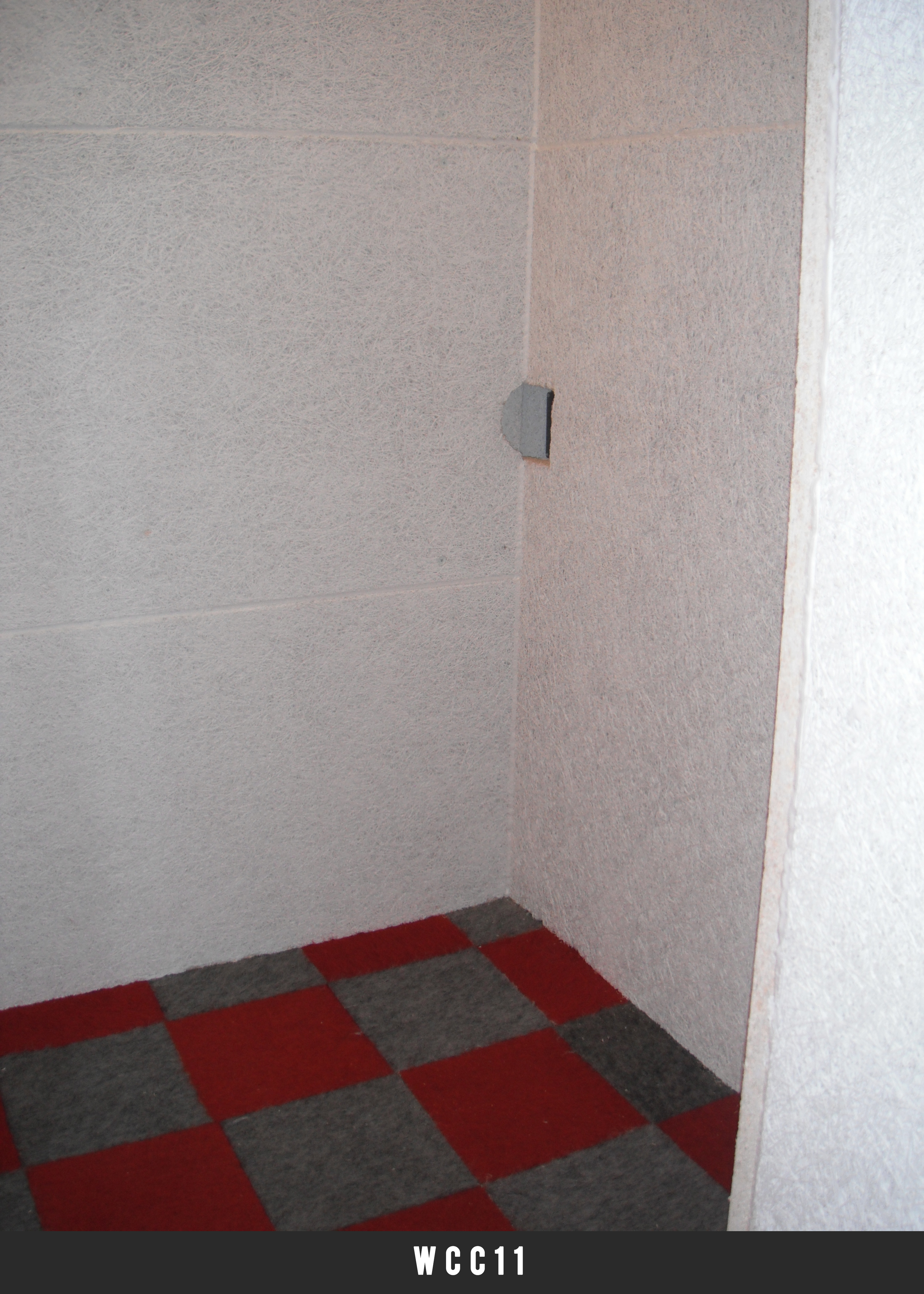Warwickshire County Council Music Service
Sanctuary Acoustics was commissioned to provide acoustic advice for an existing building operated by the Warwickshire county music service.
The project was composed of two elements; to improve the room acoustics of an existing performance space by assessing the reverberation time and other acoustic phenomena such as the effects of standing waves and provide advice and recommendations to improve the room’s internal acoustics. The second element of the project was to provide acoustic advice on the proposed conversion of a large cupboard or small storage room into a vocal booth.
An initial assessment of the performance space was conducted in which the room’s reverberation time was assessed using short measured bursts of pink noise at various locations within the space and the room’s speech intelligibility was determined using RaSTI measurements.
Following the initial assessment, it was proposed that treatment to the performance space be conducted by two means; fixed acoustic treatment and variable acoustic treatment.
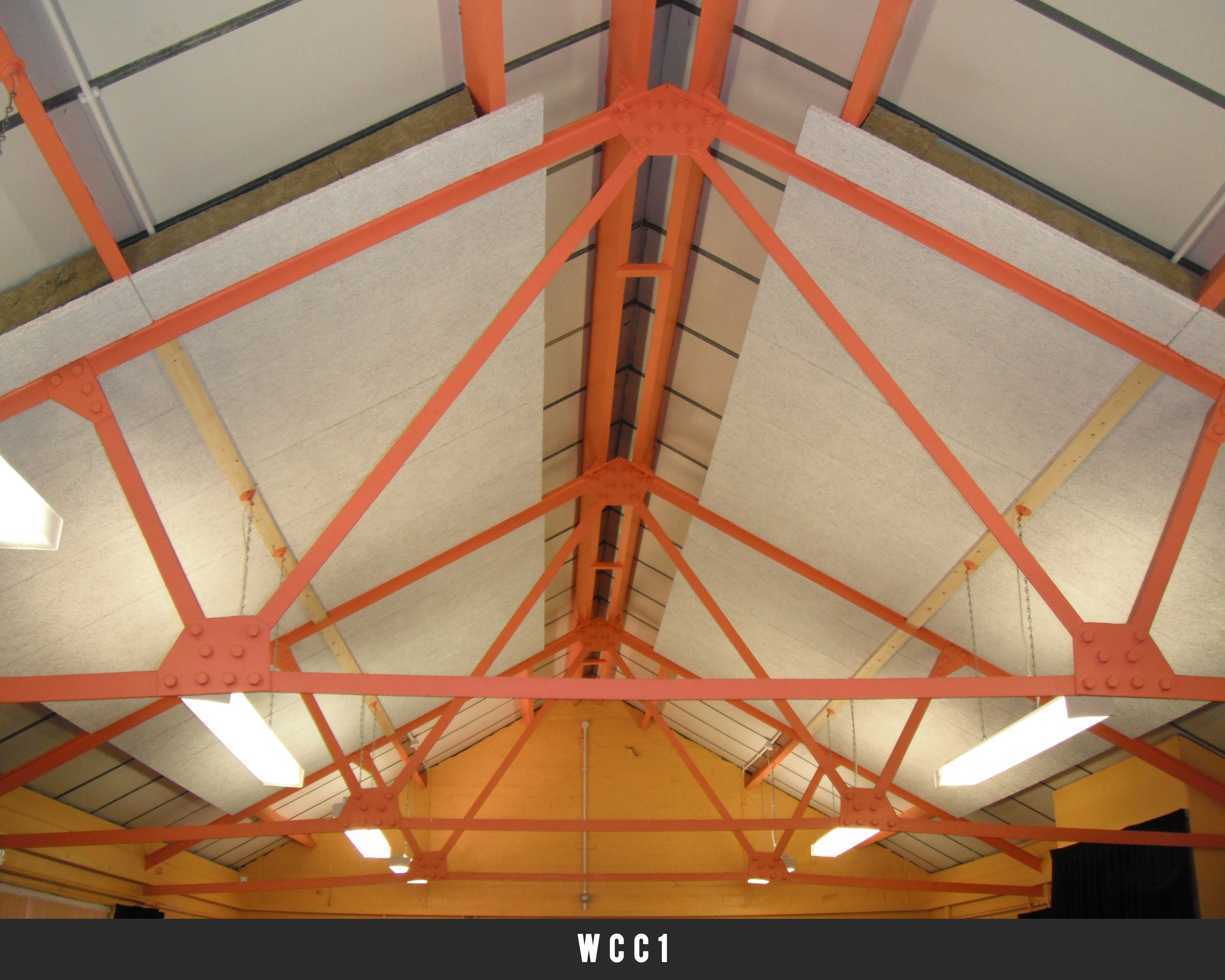
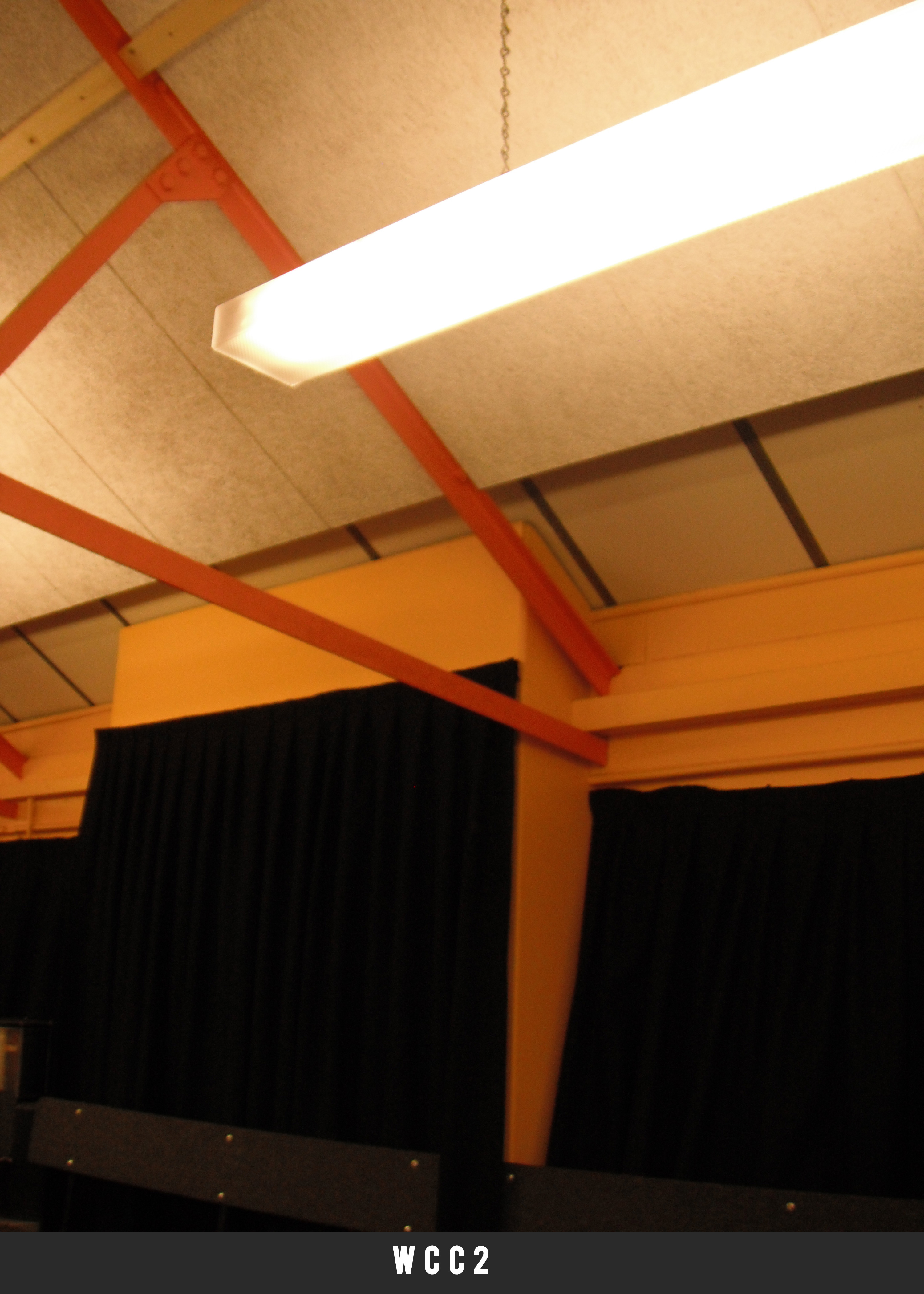
The fixed acoustic treatment was provided by fixing Woodwool panelling to the trusses in specific sections of the ceiling as can be seen in figures WCC1 and WCC2. The Woodwool was backed with 100mm mineral wool batts. The variable acoustics treatment was provided by hanging thick curtain material on opposing walls. The use of curtain material enables the reverberation time to be controlled by reducing or increasing exposure of the hard wall surface behind. The curtains also reduce standing waves and flutter echoes.
The figure WCC3 shows the finished Woodwool panelling and hung curtain material.
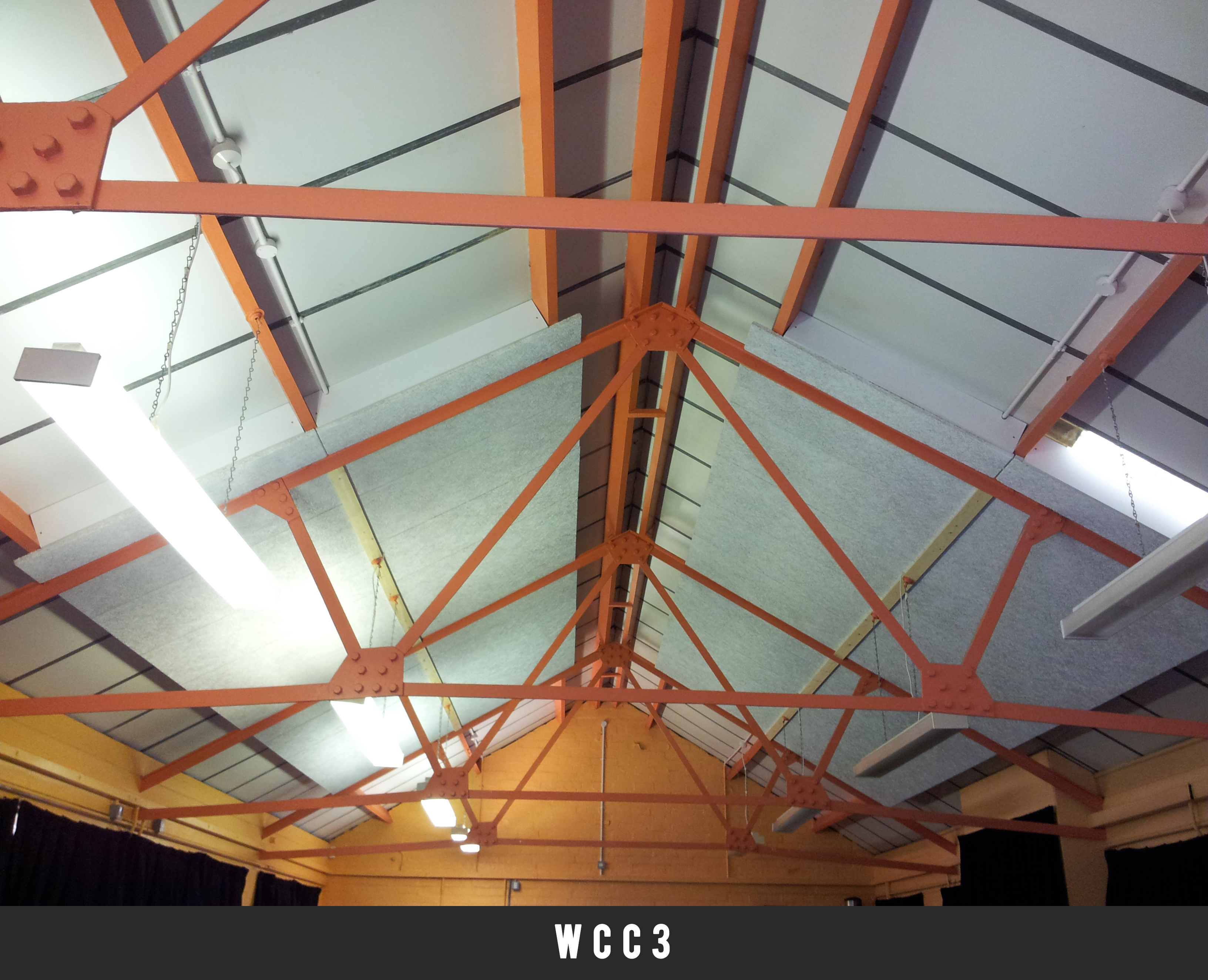
The proposed vocal booth provided for an interesting project in its own right. An initial assessment of the space was conducted both visually and by acoustic measurement. A reverberation time measurement was conducted using bursts of pink noise.
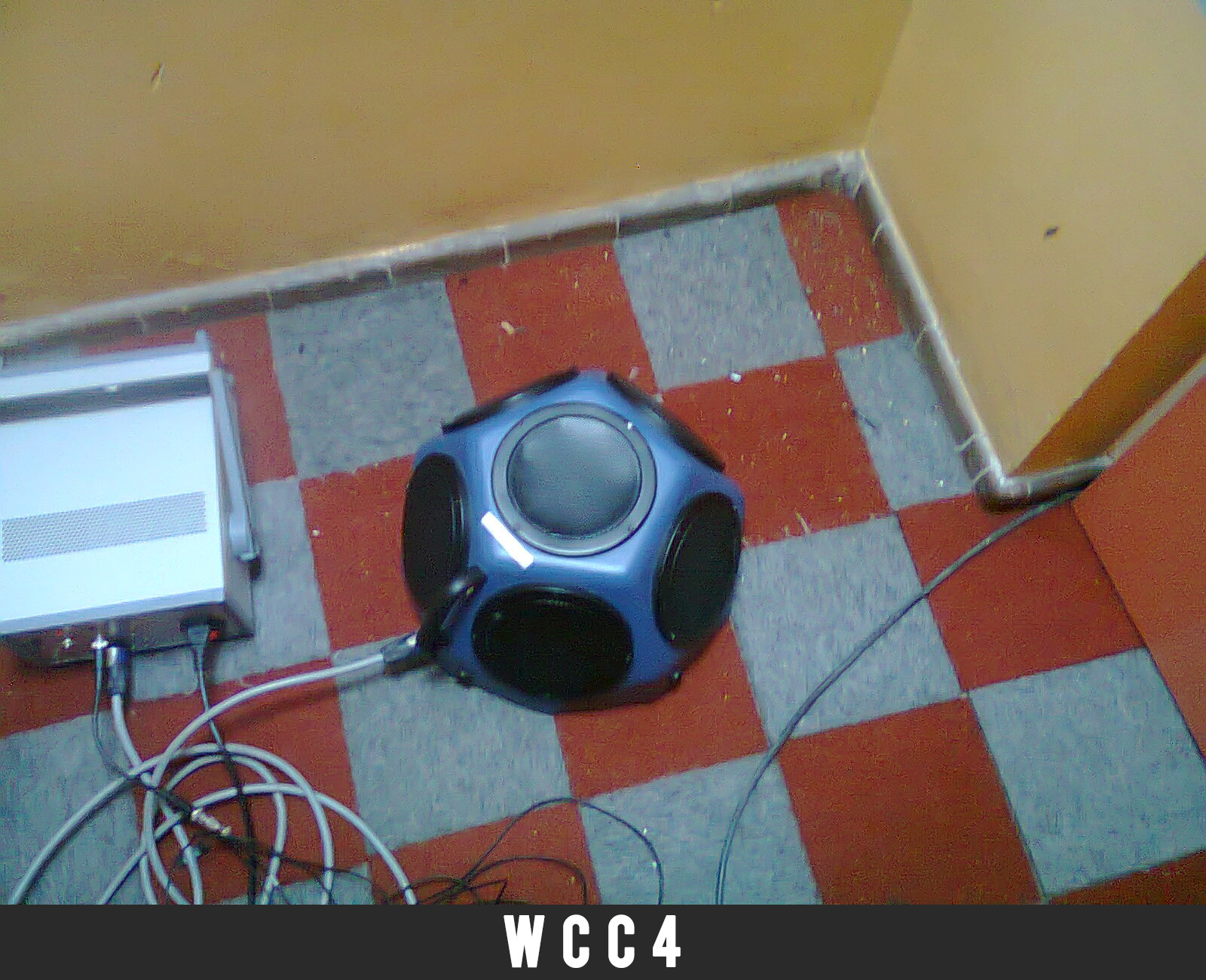
Two potential noise break-out and break-in issues were highlighted with the use of the space; firstly noise break-in through the skylight and through the single paned glass internal window.
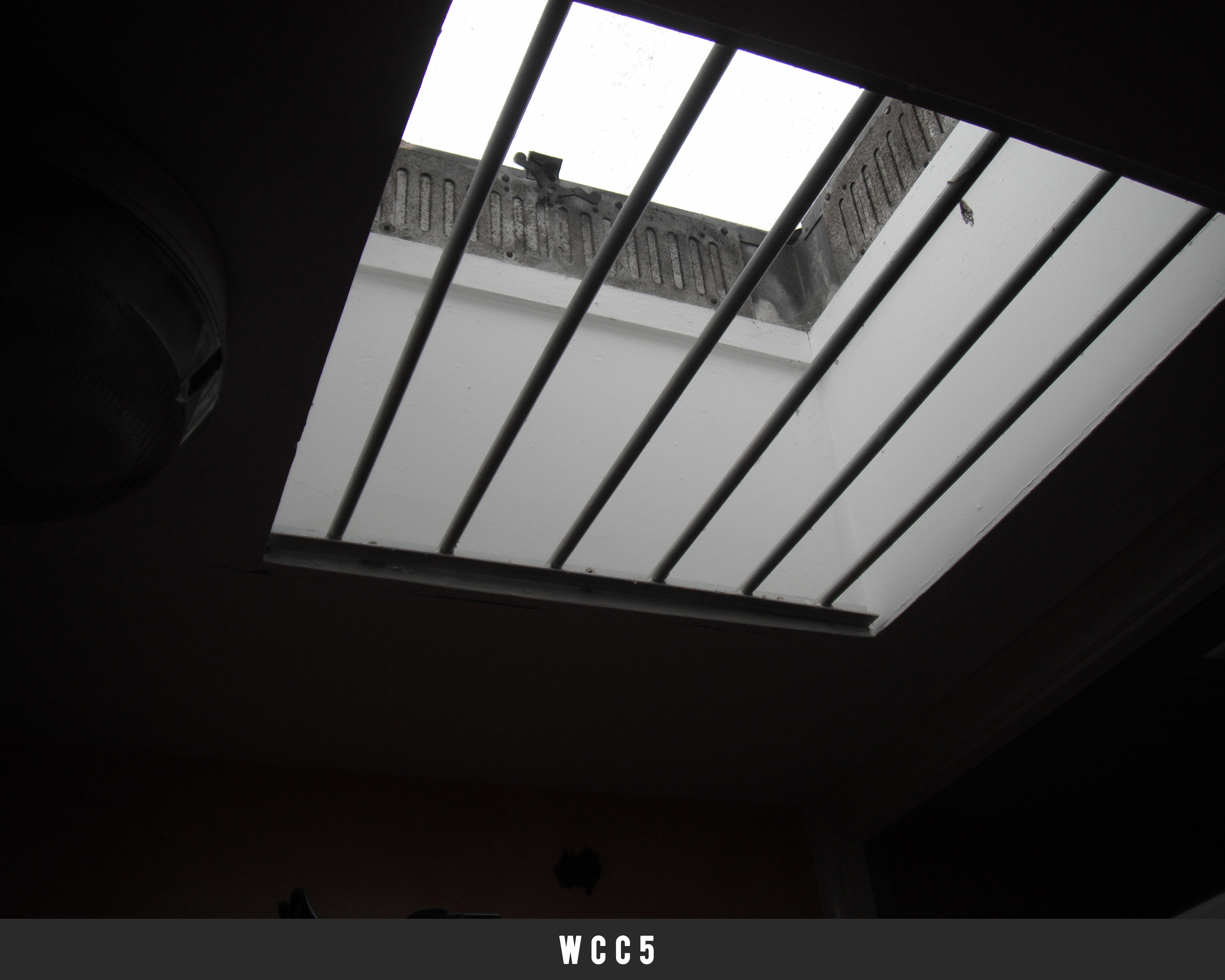
The acoustics of the vocal booth needed to be ‘neutral’ so as to provide a multi-function purpose space for either singing or speech. The finished vocal booth could also be used for performing a guitar or bass guitar solo. The neutrality of the room meant that such effects as reverb would need to be applied by the recording or mixing engineer.
Following the assessment it was proposed that an inner timber framework be constructed with mineral wool installed into the wood frame cavity and faced with Woodwool.
The figure WCC6 shows the wood framework with mineral wool.
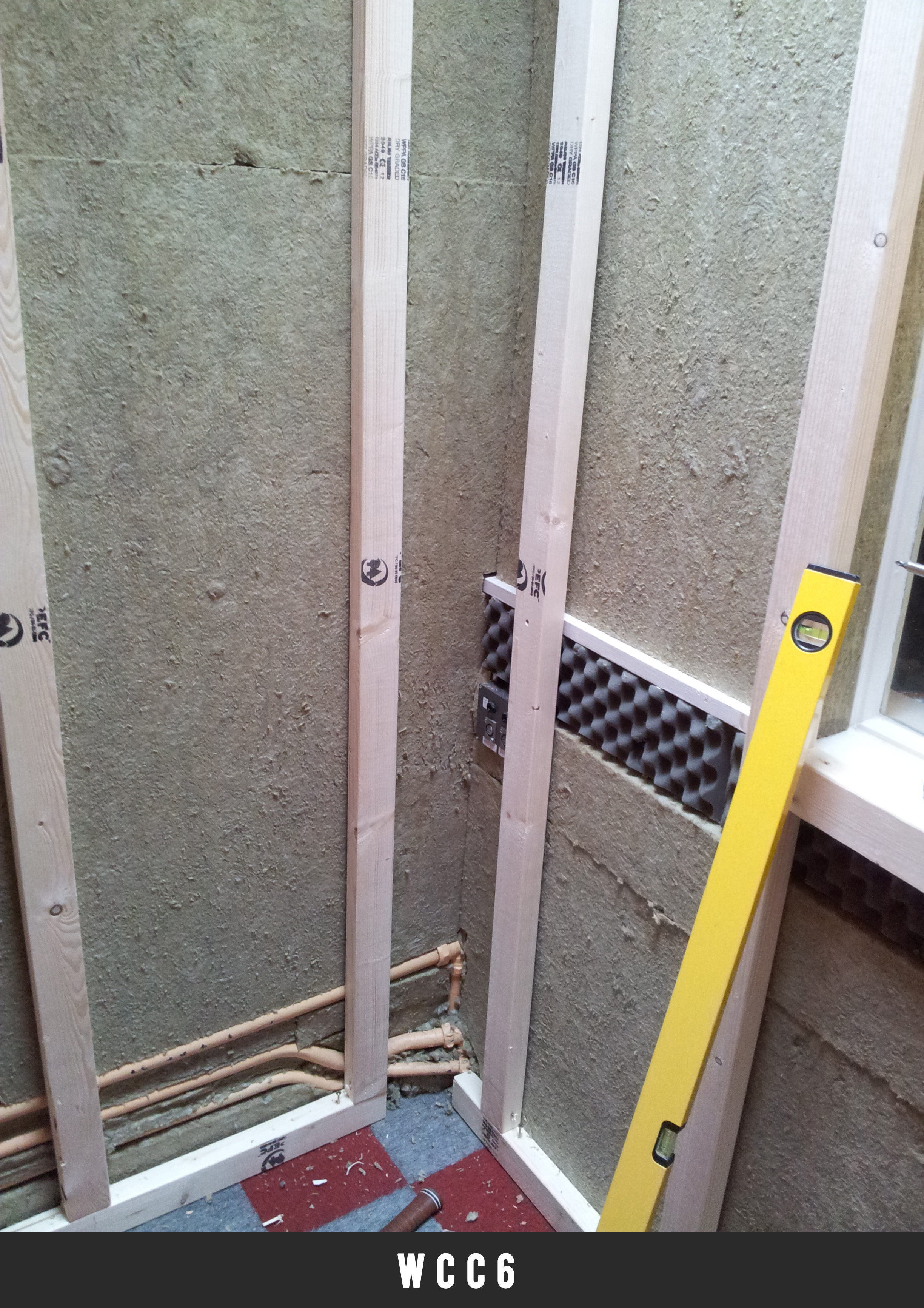
The skylight was blocked up by a similar wooden framework with a mineral wool core and internally faced with Woodwool as shown in figure WCC7.
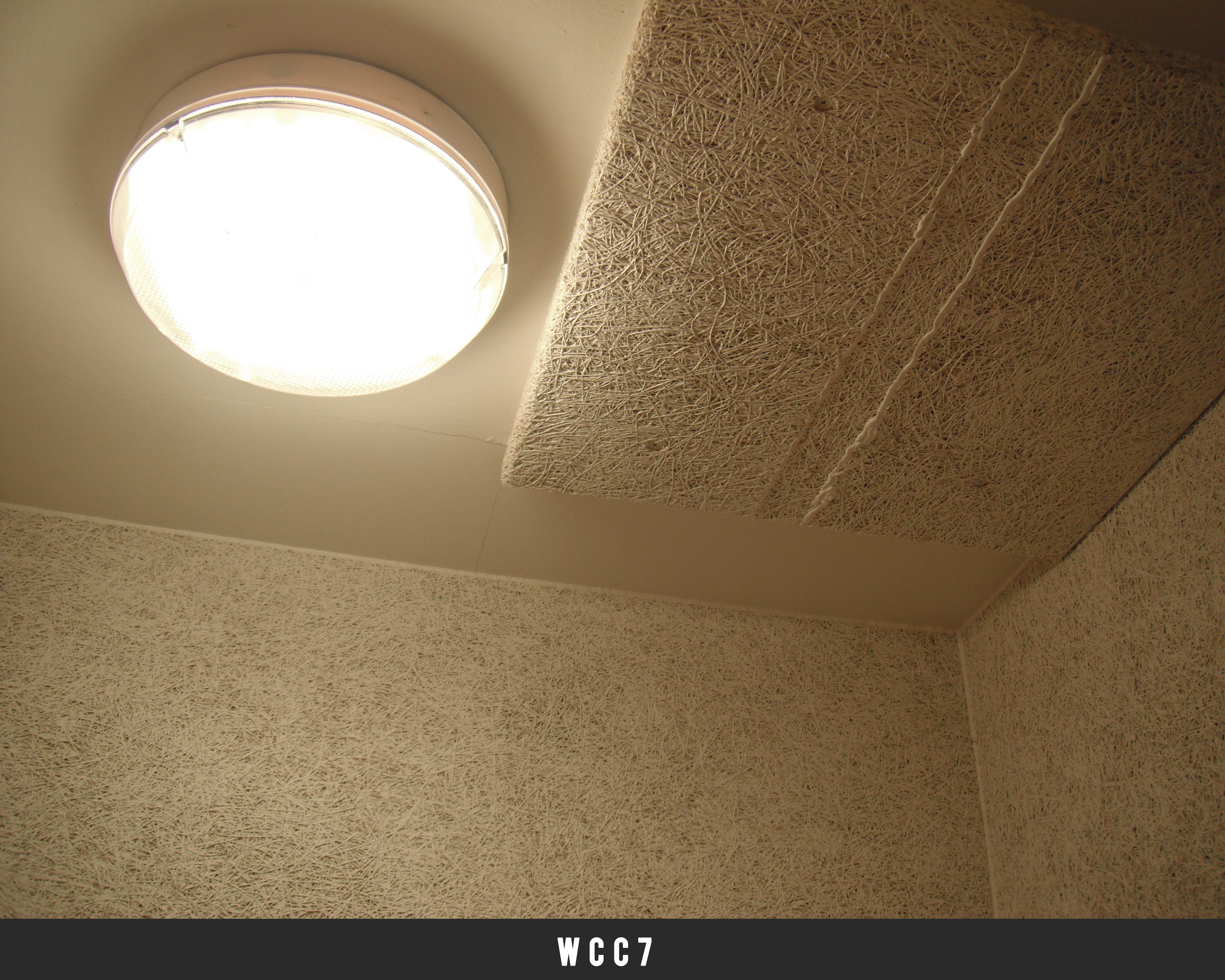
The glazed unit was split into 3 sections, 2 vertical sections with a horizontal section above; figure WCC8 depicts the glazed unit looking into the vocal booth.
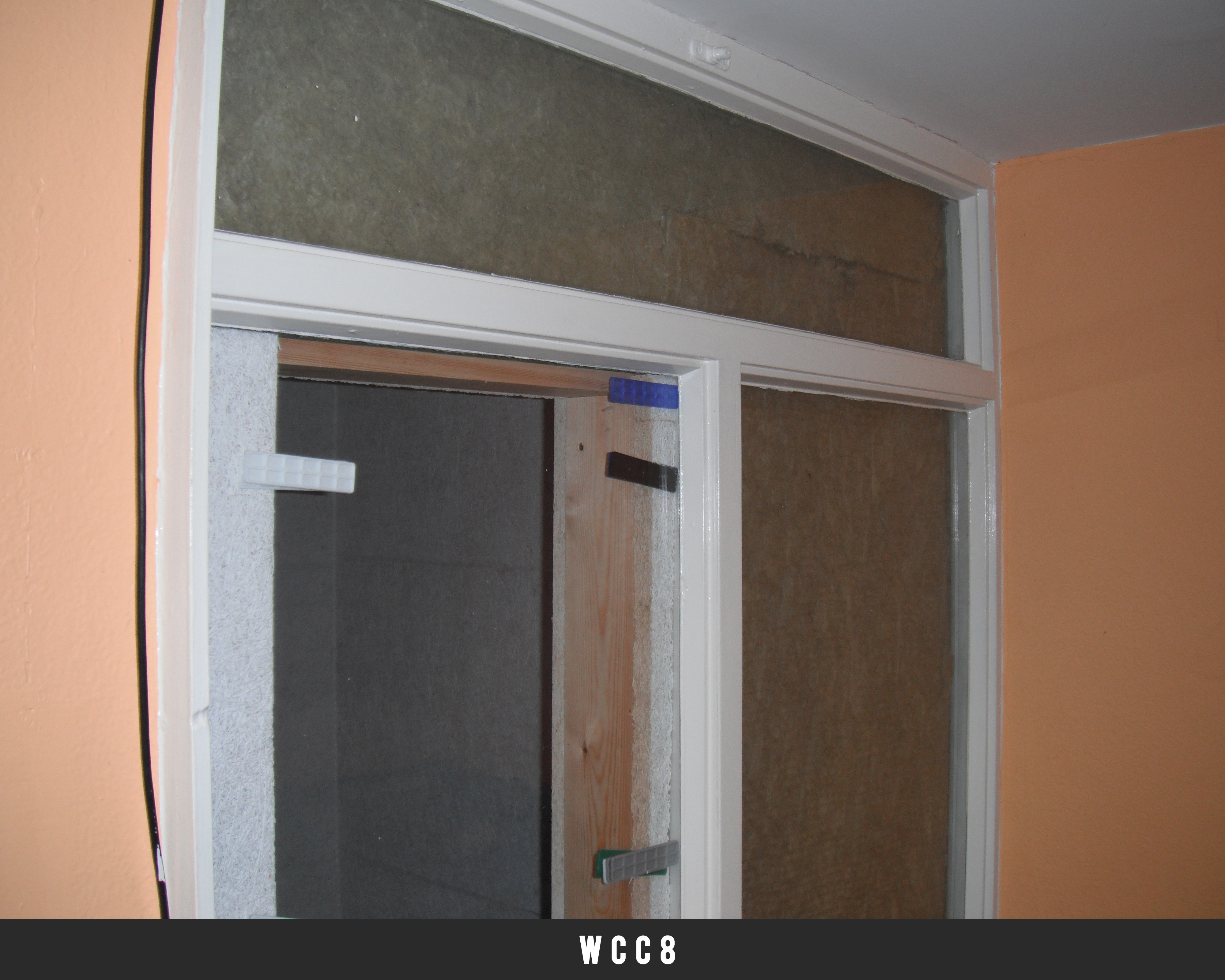
Internally, the glazed section on the left and the horizontal section above were in-filled with mineral wool batts and faced with Woodwool panelling. The right-hand section was retained but required improvement to prevent both noise break-out and break-in.
It was proposed that the existing single glazed unit be retained with a further double glazed unit to be installed internally. The new addition was installed at a 20 degree angle from the base of the frame to the top of the unit to prevent sound reflections back onto the vocalist. Therefore between the double glazed planes and the existing single pane is a significant air gap which provides good sound attenuation and with all three panes of glass being of different thicknesses, the centre frequencies of resonance will also differ between panes.
Figure WCC9 depicts the glazed unit with the completed Woodwool panelling surrounds.
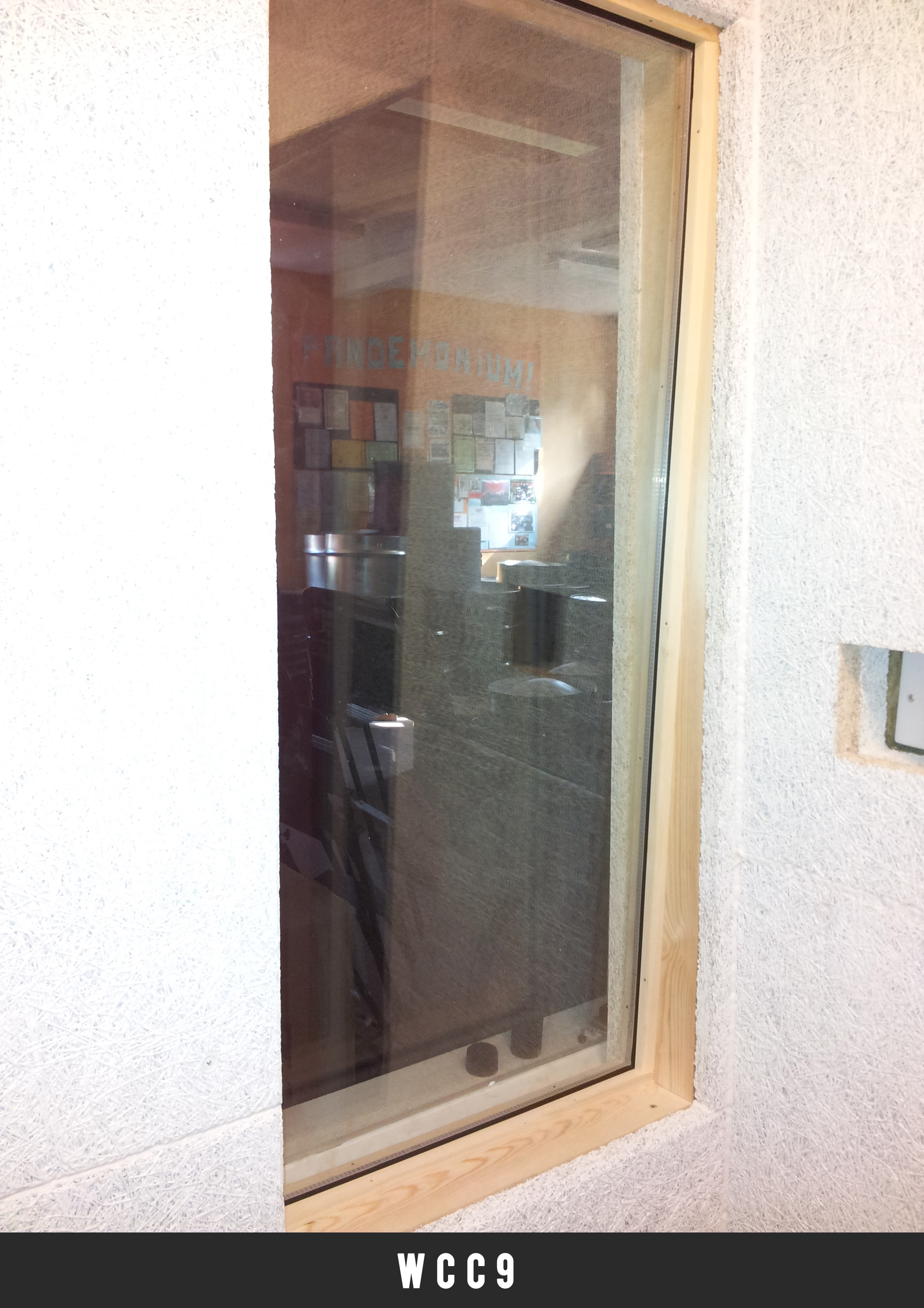
The treatment to the vocal booth provided for an acoustically neutral space which also prevented noise break-out through the existing glazed unit and noise break-in through the skylight. The existing light switch as can be seen in figure WCC9 was preserved as was the XLR connection box for microphone use as depicted in figures WCC10 and WCC11.
